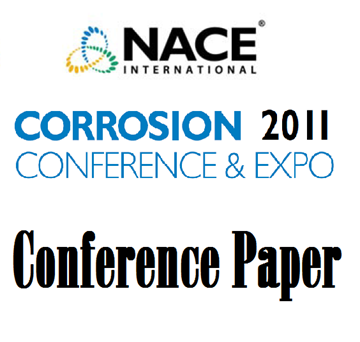Search
Products tagged with 'sour environment'
View as
Sort by
Display
per page
11292 Effect of Post Weld Heat Treatment on the Hydrogen Trapping Behavior of Pressue Vessel Steel
Product Number:
51300-11292-SG
ISBN:
2011 11292 CP
Publication Date:
2011
$20.00
51315-5925-Effect of Cl- on Corrosion Behavior of Austenitic Stainless Steel Under Sour Environment
Product Number:
51315-5925-SG
ISBN:
5925 2015 CP
Publication Date:
2015
$20.00
51316-7113-Relation Between Localized Corrosion And SCC In Nickel Based Alloys In HP/HT Oil And Gas Environments
Product Number:
51316-7113-SG
ISBN:
7113 2016 CP
Publication Date:
2016
$20.00
51316-7333-Comparison of Corrosion Behavior in HIC Test Solutions for FFP evaluation
Product Number:
51316-7333-SG
ISBN:
7333 2016 CP
Publication Date:
2016
$20.00
Alloying Effect Of Mo In Martensitic Stainless Steel On Passive Film In H2S-CO2 Environment
Product Number:
51322-17538-SG
Publication Date:
2022
$20.00
Choice of Buffer Solution for Stainless Steel OCTG at Laboratory Corrosion Test to Carry Out SSC and SCC Resistance
Product Number:
51317--9288-SG
ISBN:
9288 2017 CP
Publication Date:
2017
$20.00
Effect of Ni on Sulfide Stress Cracking and Stress Grooving in Carbon Steel - Part 1: Constant-load (Dead-weight) Test
Product Number:
51324-20715-SG
Publication Date:
2024
$40.00
Effect of Plastic Strain on Hydrogen Absorption of Low Alloy Carbon Steel for Linepipe
Product Number:
51323-19139-SG
Publication Date:
2023
$20.00
Full Ring Test in Sour Environment - Importance of Testing Set-Up and Strain Monitoring
Product Number:
51324-20997-SG
Publication Date:
2024
$40.00
In-situ 3D Analysis of Hydrogen Induced Cracking Behavior in Linepipe Steels to Investigate Sour Environmental Severity
Product Number:
51321-16383-SG
Publication Date:
2021
$20.00
In-Situ Observation Of Hydrogen-Induced Cracking Initiation Site In Linepipe Steels
Product Number:
51322-17816-SG
Publication Date:
2022
$20.00
Sour Environmental Severity Based On Hydrogen Permeability And HIC/SSC Susceptibilities
Product Number:
51321-16543-SG
Publication Date:
2021
$20.00
- 1
- 2












